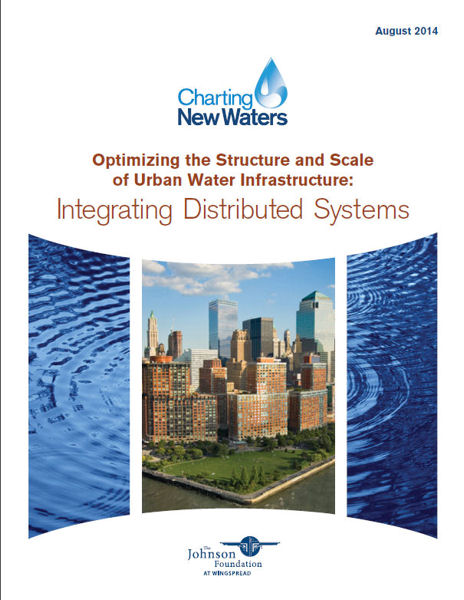
The Johnson Foundation at Wingspread (Racine, Wis.) report, “Optimizing the Structure and Scale of Urban Water Infrastructure: Integrating Distributed Systems,” examines the potential use of distributed water infrastructure systems. Photo courtesy of The Johnson Foundation at Wingspread.
The Johnson Foundation at Wingspread (Racine, Wis.) released the report, “Optimizing the Structure and Scale of Urban Water Infrastructure: Integrating Distributed Systems,” as part of its Charting New Waters initiative. In March, the foundation partnered with the Water Environment Federation (WEF; Alexandria, Va.) to convene a group of experts to examine the potential for distributed water infrastructure systems to be integrated or substituted for traditional water infrastructure. The report provides insights and recommendations from the meeting.
For many decades, U.S. cities have relied on large-scale, centralized water infrastructure for drinking water, wastewater treatment, and stormwater management. But now experts are viewing distributed systems as complementary or, in some situations, a preferred alternative to centralized infrastructure. The experts who met in March noted “a growing receptiveness among water and wastewater utilities to consider distributed infrastructure solutions, and agreed that these solutions will play a significant role in the future of U.S. water infrastructure and will bolster efforts to create resilient, sustainable, and water-secure urban communities,” according to the report.
Also as part of the Charting New Waters efforts, the foundation released another report, “Developing an Agenda for Change for New Jersey’s Urban Water Infrastructure,” which discusses how the state can address its water infrastructure challenges, such as combined sewer overflows. The report outlines recommended actions, and calls on partners to ensure investments are made to design, construct, and maintain infrastructure that strengthens cities, enables economic growth, and leverages modern practices.








October 30, 2014
Learning Opps